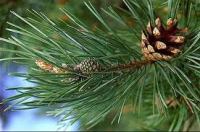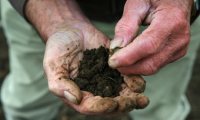We take it for granted. We understand it. It is obvious what temperature is. Cold, warm, hot…obvious.
But how many of us have asked the next question: what is the real difference between a hot stone and a cold one? The answer is interesting and helps us to realise that measuring temperature is much trickier than we tend to suppose.

Over many hundreds of years, many clever people have devised lots of experiments to understand what temperature is, I hope in this article to round up the facts!
Temperature and Energy
For much of history, there were only a few sources of heat – the sun, fire, lava and of course the warmth of living creatures.
People were puzzled by what created it, but it was immediately obvious that it had one consistency – whenever it had the chance, it flowed – put something hot next to something cold, and the heat would flow.
Of course you could argue that it was the ‘cold’ that flowed (the other way), but there were no obvious sources of ‘cold’. While ice was clearly cold, it was not a sustainable ‘source’ of cold the way a fire was.
It was also noted that heat melted things – like fat or butter and that it make some liquids (like molasses) thinner. It could even boil water and make it ‘vanish’. The mechanisms for these were unknown and a source of fascination for early scientists.
Early experimenters noticed that gases would increase in volume upon heating, and that compressing gases would cause them to heat up. They also investigated other sources of heat, like friction, (rubbing your hands together).
It was the work with gas that led to the big breakthrough. Boyle and Hooke, as well as Edme Marriotte, working in the 17th century, realized that the temperature of a gas would increase consistently with pressure, and like-wise, decrease consistently with pressure. This sounds unremarkable, until you note that you can only decrease pressure so much…
Once you have a vacuum (no pressure), you should have ‘no temperature’. Thus their observations implied that there really was a limit to how cold things could get, and predicted it was around -275 Celsius. They were of course unable to cool anything that far simply by expanding it because heat always flows into cold things, so to achieve this you need much better insulation than they had available.
So they had a big clue in the search to understand what temperature is, but still no explanation.
It took until 1738 until another great scientist moved us forward. Daniel Bernoulli realised you could use Newton’s (relatively new) laws to derive Boyle’s temperature-pressure relationship. He basically asked: what if gas was made of a large number of very small billiard balls flying around crashing into everything? What if pressure was just the result of all these collisions? Using this theory he realised, for the first time I think, what temperature truly is.

Source: Wikimedia Commons
It turns out that his model equated temperature with the speed of the billiard balls. A hot gas only differs from a cold gas in the speed of the molecules flying around. Faster molecules crash with more momentum and thus impart more pressure. Squashing the gas into a smaller volume does not give them more speed, but means more collisions each second, so higher pressure.
This is a pretty serious finding. It basically says ‘there is no such thing as temperature’. There is only lots of little balls flying around, and their number and speed dictate the pressure they exert, and there is no ‘temperature’.
If we put a thermometer into the gas, what is it detecting then? Great question.
It turns out that solids are also made of lots of balls, except, instead of being free to fly around, they are trapped in a matrix. When a solid is exposed to a hot gas, it is bombarded by fast flying atoms. When a solid atom is hit, instead of flying off, it starts to vibrate, like a ball constrained by a network of springs.
So the ‘temperature of a solid is also a measure of speed of motion, but rather than linear speed it’s a measure of the speed of vibration. This makes a lot of sense – as the solid gets hotter, the balls are going literally ‘ballistic’ and eventually have enough speed to break the shackles of the matrix (aka melting).

Source: Wikimedia Commons
So this model of heat as ‘movement’ not only explains how gases exert pressure, but also explains how heat flows (through molecular collisions) and why things melt or vaporise.
More importantly, it shows that temperature is really just a symptom of another, more familiar, sort of energy – movement (or kinetic) energy.
Energy is a whole story of its own, but we can see now how energy and temperature relate – and how we can use energy to make things hot and cold.
Making Things Hot
There are many easy ways to make things hot. Electricity is a very convenient tool for heating – it turns out that when electric current flows, the torrent of electrons cannot help but buffet the atoms in the wire, and as they are not free to fly away, they just vibrate ever faster, ‘heating’ up.
Another way to heat things is with fire. Fire is just a chemical reaction – many types of molecules (like methane, or alcohol) contain a lot of ‘tension’, that is to say, they are like loaded springs just waiting to go off. Other molecules (often oxygen) hold the ‘key’ to unlocking the spring, and when the springs go off, as you can imagine, it is like a room full of mousetraps and ping-pong balls – and all that motion – means heat.
[youtube=http://www.youtube.com/watch?v=Pmy5fivI_4U]
Making Things Cold
Manipulating energy flows to make things cold is much trickier.
One way it to just put the thing you want to cool in a cold environment – like the north pole. But what if you want to make something colder than its surroundings?
Well there is a way. We learned earlier that gases get hot when compressed – it turns out they do the opposite when decompressed or ‘vented’. This is the principle that makes the spray from aerosol cans (deodorant, lighter fluid, etc) cold. So how can we use this? First we use a compressor to compress a gas (most any gas will do); in the process it will warm up, then you let it cool down by contacting it with ambient air (through a long thin copper tube, but keeping it compressed), then decompress it again – hey presto, it is cold! Pump this cold gas through another copper tube, inside a box, and it will cool the air in the box – and hey presto, you have a refrigerator.
Measuring Temperature
 Before we had thermometers, temperature was generally estimated by touch.
Before we had thermometers, temperature was generally estimated by touch.
However this is where temperature gets tricky. Because the temperature we feel, when we put our hand on the roof of a car is not really the temperature of the car, it’s really the measure of energy flow (into our hand), which relates to the temperature, but also relates to the conductivity of the car.
This is why hot metal feels hotter than hot wood, why cold metal feels colder than cold wood – the metal, if at a different temperature to your hand, is able to move more heat into you (or take more heat away) faster than wood can. Thus our sense of temperature is easily fooled.
The ‘wind-chill factor’ is another way we are fooled – we generally walk around with cloths on, and even without clothes we have some body hair – therefore, we usually carry a thin layer of air around with us that is nearly the same temperature as we are. This helps us when it is cold and when it is hot – however, when the wind blows it rips this layer up and supplies fresh air to our skin – making us feel the temperature more than usual. Also, because our skin can be damp, there can be evaporative effects which can actually cool you below the air temperature.
Scientists have long known that we cannot trust ourselves to measure temperature, so over the ages many tricks have been developed – can the object boil water? Can it freeze water? A long list of milestone temperatures was developed and essential knowledge for early scientists – until the development of the lowly thermometer.
It was noted that, like gases, solids and liquids also expand upon heating. This makes intuitive sense if you think of hot molecules as violently vibrating – they push one another away, or at least if the charge (electric charge is what holds these things together) is spread just a little thinner, adjacent molecules will have slightly weaker bonds.
The expansion of liquids may only be very slight, and if you have a big volume of liquid in a cup, the height in the cup will change only very slightly, but if its in a bottle with a narrow neck, the small extra volume makes a bigger difference to the level. This principle is used in a thermometer – it’s just a bottle with a very narrow and long neck. The bigger the volume and the narrower the neck, the more sensitive the thermometer. Of course the glass also expands, so it is important to calibrate the thermometer – put it in ice water, mark the liquid level – then put it in boiling water and mark the new level. Then divide the distance between these marks into 100 divisions – and hey presto! you have a thermometer calibrated to the centi (hundred) grade (aka Celsius) scale. Now you know where that came from!
=================
So that is temperature explained in a nutshell. If you enjoyed this article you may enjoy my related article on energy.

















